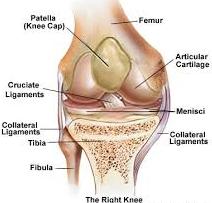Causes and Management of Sternoclavicular Joint:
The Sternoclavicular Joint happens between the proximal end of the clavicle and the clavicular level of the manubrium of the sternum together with a little sector of the first costal fibrous.
This is the least commonly dislocated joint because of the strong ligaments.
- Direct force rarely causes this injury. For example, collision of an athlete with another person or a post, etc
- Indirect force is the most common mode of injury. For example, loading the upper shoulder while someone lies on the sides
- Incidence is about three percent and is more common in young males.
Causes
Road traffic accident (RTA) is responsible for 80 percent of the cases, sports-related injuries account for the remaining 20 percent.
Classifications
Anatomical classification
- Anterior dislocation (more common)
- Posterior dislocation
Etiological classification
1. Traumatic
- Sprain
- Acute dislocation
- Recurrent dislocation
- Unreduced dislocation
2. Atraumatic
- Voluntary
- Involuntary
- Congenital
- Degenerative
- Infective
Clinical Features
The patient complains of pain and swelling. Medial end of the clavicle is prominent in anterior dislocation. Affected shoulder is short. Lateral compression test is positive.
Radiographs
- AP view is often difficult to interpret.
- Special 90 degree cephalocaudal views-this helps to see the medial ends of both the clavicles (serendipity view).
- Tomograms are useful.
- CT scans and MRI help to study the position of clavicle with respect to sternum and soft tissues respectively.
Management
- Mild sprain: The treatment consists of ice, sling, painkillers, etc.
- Subluxation: The treatment methods are ice (first 12 hr), warmth (24-48 hr), clavicle strap, and figure of ’8′ and excision of medial end if pain persists.
- Dislocation: The treatment of choice is closed reduction by firm digital pressure followed by figure of ’8′, clavicle strap, sling, etc. If it fails, open reduction and internal fixation using K-wire is done.
Active Physical Therapy’s experienced dedicated physical therapists and talented clinical team then design individualized treatment plans to achieve the specific goals for each patient per your doctor’s expectation. Call now for best Treatment: 301-877-2323









